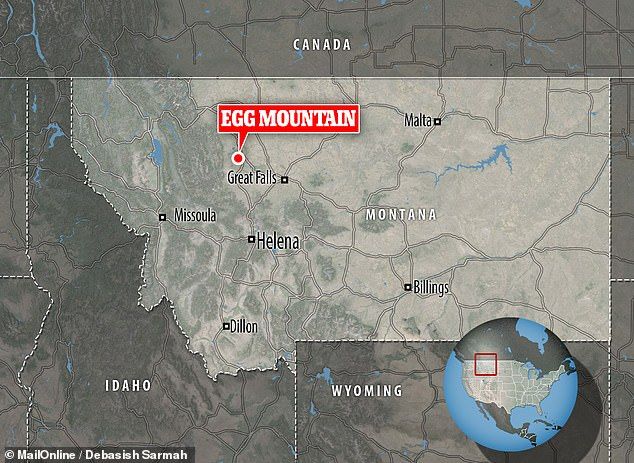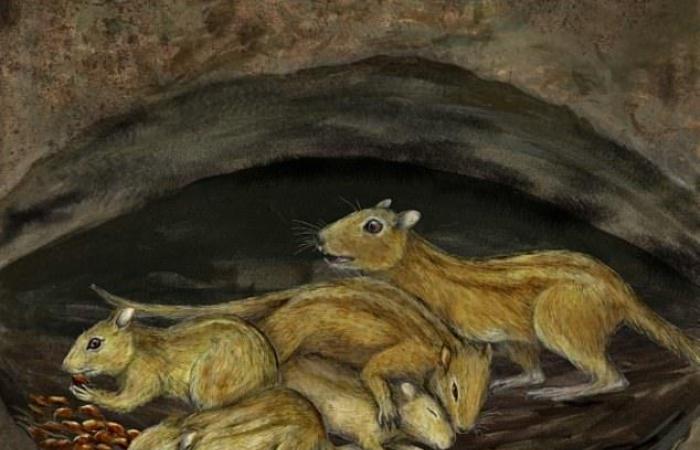Cuddling can go back further than thought, as scientists discovered the remains of a 75.5 million year old structure that contains the fossils of cuddling rodents.
US paleontologists made the find – the oldest evidence of social behavior in mammals – in a well-known nesting site for dinosaurs called Egg Mountain in Montana.
The small mammals – called Filikomys primaevus, which translates as “juvenile, friendly mouse” – represent a new genus of the so-called multituberculate.
Previously, it was believed that social behavior first appeared in mammals after the asteroid-induced mass extinction that killed the dinosaurs.
In addition, it was also believed that this was largely confined to the placentalia – the group in which mothers carry their fetus until a late stage before birth.
The find – the nesting and digging of multigenerational groups – however, broadens our notion of how this sociality evolved.
Cuddling can go back further than thought, as scientists discovered the remains of a 75.5 million year old structure that contains the fossils of cuddling rodents. The picture shows an artistic impression of a social group of Filikomys primaevus that nest in their common den
“These fossils are changing the game,” said paper writer Gregory Wilson Mantilla of the University of Washington and the Burke Museum of Natural History and Culture.
“As paleontologists working to reconstruct mammalian biology from that era, we usually stare at individual teeth and perhaps a jaw rolling down a river,” he added.
“But here we have several, almost complete, skulls and skeletons that are kept exactly where the animals lived.”
“We can now credibly see how mammals really interacted with dinosaurs and other animals that lived at the time.”
In their study, Professor Wilson Mantilla and colleagues analyzed the fossilized remains of 22 individuals of F. primaevus, most of which were grouped into groups of two to five people.
In fact, 13 of the specimens were found in a single 30-square-foot area of rock – and the groupings contained mixtures of mature and young adults, suggesting that the finds aren’t just parents and their young.
Due to the nature of the surrounding rock, the preservation of the fossils, and their powerful shoulders and elbows, the team concluded that the mammals lived in caves.
The remains represent the most complete mammalian fossils ever to date from the Mesozoic Era – the period from 252 to 66 million years ago – in North America.


The small mammals – called Filikomys primaevus, which translates as “juvenile, friendly mouse” – represent a new genus of the so-called multituberculate. In the picture the fossilized remains of two adult and one juvenile Filikomys primaevus


“Multituberculates are one of the oldest groups of mammals and have been extinct for 35 million years. However, in the Late Cretaceous Period, they interacted in groups, much like modern ground squirrels do, ”said Luke Weaver of the University of Washington
“It was crazy getting this paper done when the home stay orders went into effect,” commented paper writer and biologist Luke Weaver, also of the University of Washington.
“Here we are all trying our best to socially distance and isolate ourselves, and I write about how mammals interacted socially long ago, when dinosaurs roamed the earth,” he added.
“I think it’s really powerful to see how ingrained social interactions are in mammals.”
“Because humans are such social animals, we tend to believe that sociality is unique to us, or at least to our close evolutionary relatives, but now we can see that social behavior goes way back in the mammalian family tree.”
“Multituberculates are one of the oldest groups of mammals and have been extinct for 35 million years. In the late Cretaceous period, however, they interacted in groups, much like modern ground squirrels do. ”
The full results of the study have been published in the journal Nature Ecology & Evolution.


US paleontologists made the find – the oldest evidence of social behavior in mammals – in a famous nesting site for dinosaurs called Egg Mountain in Montana
These were the details of the news Paleontology: The 75-million-year-old structure contains fossilized rodents that have snuggled together for this day. We hope that we have succeeded by giving you the full details and information. To follow all our news, you can subscribe to the alerts system or to one of our different systems to provide you with all that is new.
It is also worth noting that the original news has been published and is available at de24.news and the editorial team at AlKhaleej Today has confirmed it and it has been modified, and it may have been completely transferred or quoted from it and you can read and follow this news from its main source.




